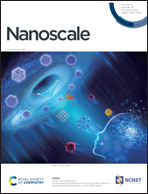Doping P atom with a lone pair: an effective strategy to realize high HER catalytic activity and avoid deactivation under wide H* coverage on 2D silicene and germanene by increasing the structural rigidity†
Abstract
In view of the weak aromatic characteristic resulting from the weak π-bonding ability (different from the analogous graphene), employing two-dimensional (2D) silicene and germanene monolayers could be one of the most promising ways to realize a new type of highly efficient and nonprecious catalyst for the hydrogen evolution reaction (HER). However, the HER activity of pristine silicene and germanene has to be improved, although both of them can exhibit a good change trend. Particularly, the hydrogen phenomenon can occur under moderate or high H* coverage on 2D silicene and germanene. To overcome these bottlenecks, in this study we identify the most effective strategy through doping P with a lone pair to significantly improve the HER catalytic activity under a high H* coverage, by screening a series of IIIA (i.e., B, Al, Ga, In and Tl) and VA (i.e., N, P, As, Sb and Bi) heteroatoms with different electronegativity under detailed DFT calculations. It is revealed that the doped P atoms and almost all the Si/Ge atoms can uniformly serve as highly active sites. Especially, in view of the existence of the lone pair, doping P effectively prevents hydrogenation (even under full H* coverage) by increasing the structural rigidity. Moreover, the P-doping concentration also plays a crucial role in obtaining high HER activity. The relevant mechanisms have been analyzed in detail. Clearly, all these fascinating findings are beneficial for realizing new HER electrocatalysts based on the excellent silicene or germanene nanomaterials, and even other Si/Ge-related materials in the near future.



 Please wait while we load your content...
Please wait while we load your content...